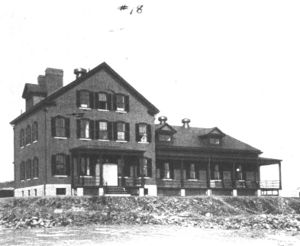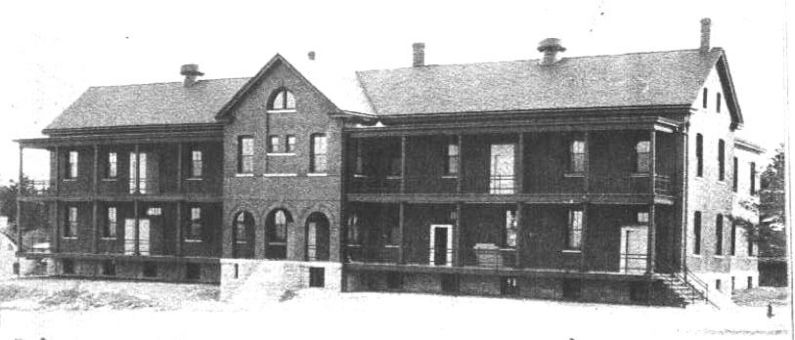Fort Levett
| More information at Warlike, Wikipedia
Fort Levett (1894-1948) - An Endicott Period Coastal Fort first established in 1894 on Cushing's Island in Cumberland County, Maine. Named in G.O. 43, 4 Apr 1900, after Christopher Levett, who explored Portland Harbor in 1623 and built the first fortified structure in the vicinity. Abandoned in 1948. The name of the fort is often enough incorrectly given as Leavitt.
Endicott Period (1890-1910)Part of the Harbor Defense of Portland, Maine. 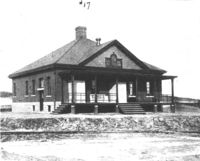  Construction began on the first two Endicott Period gun batteries in 1898 long before there were any permanent post buildings and long before there was any garrison at the post. Battery Bowdoin and Battery Kendrick were built as one and had the same completion date and acceptance date of 23 Apr 1903. The post and the first two batteries were all named in the same General Order 43, on 4 April 1900. The post was previously known as the Reservation on Cushing Island. Fort Levett is shown at the end of 1903 with the first three batteries complete and turned over for service and as have all guns and carriages mounted but still without a garrison. Battery Daniels was also completed and accepted for service on 23 Apr 1903 and named in General Order 78 on 25 May 1903. Battery Ferguson was the last Endicott Period battery begun and it was accepted on 22 Jun 1906. The construction of permanent post buildings was begun in 1904 and all were completed in1905. The post had been designed as a small one company coastal artillery fort and clearly did not have enough permanent housing for the number of troops required to service all of the gun batteries simultaneously. The permanent housing capacity was 5 officers, 5 NCOs, 114 enlisted men, 15 animals and 12 hospital beds. The guardhouse was sized for 24 prisoners and 12 guards. Fort Levett was an open plan coastal fort with the housing and administrative buildings grouped around a rectangular parade that ran from the southwest to the northeast terminating at Spring Cove. The commanders quarters were centered at the southwest end, flanked by the married officer quarters on the left side and the married NCO quarters on the right. The single enlisted barracks was centered on the right flank and the Admin building and guardhouse were across the parade from the barracks. At the cove end of the parade was the hospital and the QM and Ordnance storehouse and a wharf that ran out into the cove. QM records indicate that by the end of 1910 the post was in caretaker status and operated as a sub post of Fort Williams (1).
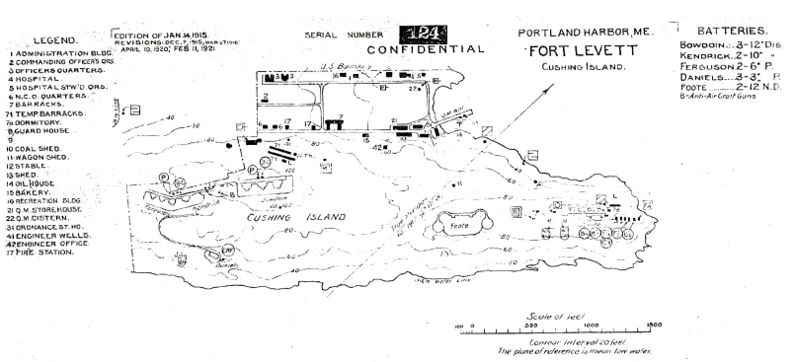
World War I (1917-1918)On 9 Jun 1915 the Board of Review recommended that an additional 12" long range gun battery be placed at Fort Levett and the Secretary of War subsequently approved that finding. The requirement for the two high-angle carriages was placed in the 1917 ordnance estimates and subsequently approved. On 15 Mar 1917 the plan for constructing the emplacements for the new battery was approved and $236,700 was allotted for the work. General Order 129, 1 Dec 1919, named the battery after Col. Stephen M. Foote, Coast Artillery Corps, who died on 30 Oct 1919. Completion of the Battery was reported on 17 Dec 1920 and transfer to the Artillery took place on 26 Jan 1921. The major difference between the new battery and the existing 12" battery with disappearing carriages was the high-angle M1917 carriage which allowed 35 deg elevation of the gun and much longer range (16 miles). The disappearing carriages generally could be elevated only 10 to 15 degrees. Other changes in armament during the World War I included the 24 Aug 1917 order to dismount the two 10" guns of Battery Kendrick for use abroad but the gun tubes were ordered remounted before they could be shipped. After the war the guns of Battery Daniels were ordered removed and the carriages ordered scrapped as a part of the 1920 disarmament program. There was clearly some expansion of the post housing capacity during World War I. Two temporary barracks can be seen on the 1920/21 post plan in back of Battery Bowdoin.
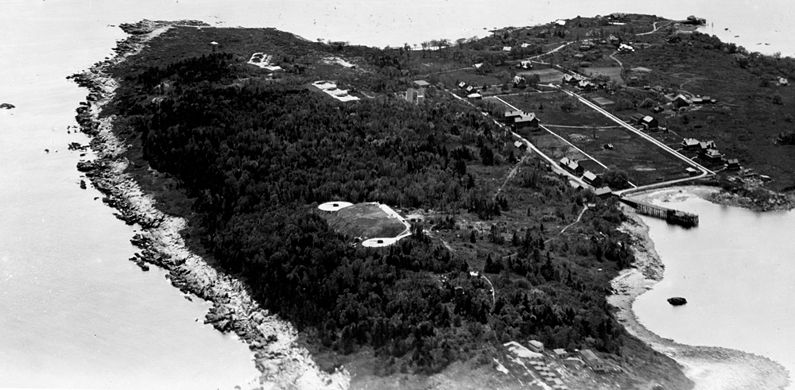
World War II (1941-1945)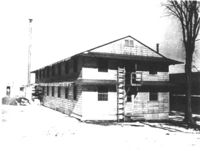  The condition of the 28 permanent structures on Fort Levett in June 1939 was very poor. Most of the quarters were considered "unhabitable" or "Poor" by the Quartermaster and he noted that the post was on caretaker status. The June 1940 report improved the ratings but not the buildings and again it was noted that considerable expenditure would be required to make them habitable and that the post was still on caretaker status. The June 1941 report shows a completely different post, $ 65,412 had been spent in the previous fiscal year on repairs to the permanent buildings and they were now rated from fair to good condition. There had also been a flurry of new construction of temporary barracks and support buildings and the capacity of the post had risen from 124 officers and men to 758 officers and men. Ten new barracks, four new mess halls and several support buildings were all crowded into the existing area around the parade. Twenty Six new temporary WWI buildings were built in 1941 before the war had started. At the start of the war all of the large caliber gun batteries on Fort Levett were obsolete and ready to be deactivated. Battery Bowdoin and Battery Kendrick were both disappearing carriage batteries that were outgunned and outranged by current naval armament and they were quickly scrapped. Battery Foote was not outgunned or outranged but its guns were out in the open and very vulnerable to air attack and plunging fire. It was decided that Battery Foote could be casemated to solve those problems but it took until 1944 to complete that task. Also needed was protection against fast motor torpedo boats and aircraft so Battery AMTB 962 was added in1943. By the end of the war only Battery Foote, Battery Ferguson and Battery AMTB 962 were still operational.
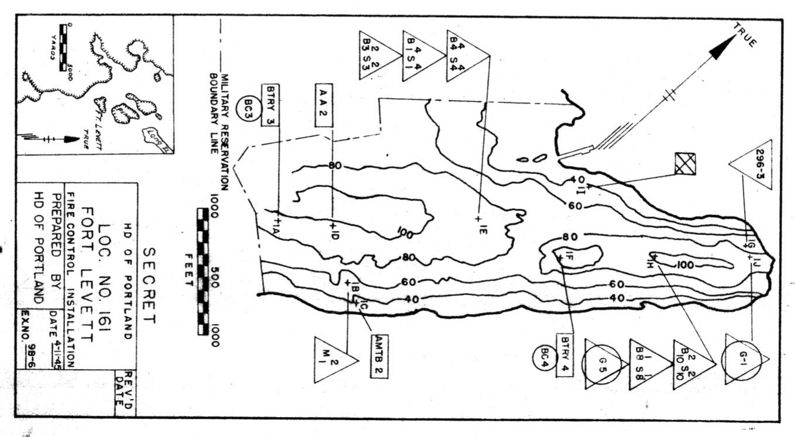
Current StatusOn Cushing's Island, Cumberland County, Maine. The Island is privately held and is not open to visits from the public. The barracks building has been razed, but many of the original post buildings survive and are remarkably well preserved. The Conservation area on the seaward side of the island where the batteries are located is in the process of being rehabilitated but many of the battery structures are overgrown.
Sources:
Links: Visited: 29 Jun 2012 | ||||||||||||||||||||||||||||||||||||||||||||||||||||||||||||||||||||||||||||||||||||||||||||
